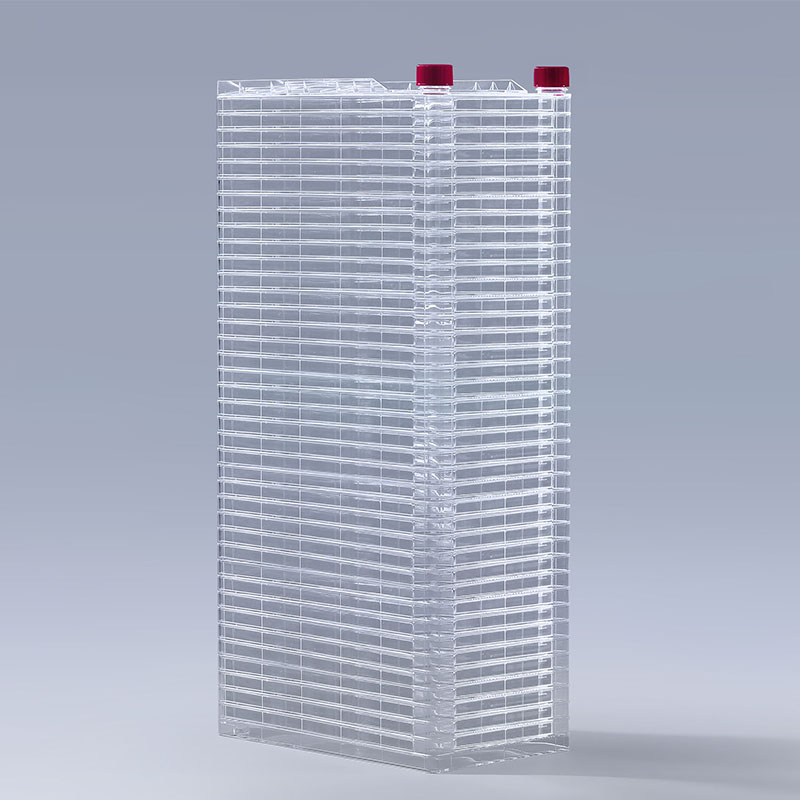Cell factories with their innovative design, have been widely adopted in the biopharmaceutical industry. Their multi-layer structure provides the maximum cultivation surface within limited space, saving valuable floor space and making capacity expansion simple and efficient.
Cell factories come in various specifications, including 1-layer, 2-layer, 5-layer, 10-layer, and 40-layer models, with each layer offering a cultivation area of 635 cm². This design gives them a significant advantage in space utilization, particularly for large-scale cell culture. For example, a 10-layer cell factory provides a cultivation area equivalent to 85 T75 flasks or 36 T175 flasks. Such a design effectively enhances cell culture efficiency and yield, meeting the demand for large-scale cell culture in the biopharmaceutical sector.

Another key advantage of cell factories is their integrated tubing system, which allows for sterile liquid transfer, significantly reducing the risk of cell contamination. This not only improves cell viability and culture quality but also makes the entire cultivation process more controllable and safe.
In the biopharmaceutical field, the application of Cell factories is already widespread. For instance, they are used in the vaccine industry for large-scale cultivation of cells needed for vaccine production. In the cell and gene therapy sector, they provide a stable and efficient platform for the development and production of therapeutic products. In the stem cell field, they are essential tools for the acquisition, culture, and research of stem cells. Overall, the design philosophy of these cell culture consumables and their practical applications in biopharmaceuticals demonstrate their potential as an innovative force.
The FAI climbed 5.9 percent year-on-year in the first 11 months of 2018, quickening from the 5.7-percent growth in Jan-Oct, the National Bureau of Statistics (NBS) said Friday in an online statement.
The key indicator of investment, dubbed a major growth driver, hit the bottom in August and has since started to rebound steadily.
In the face of emerging economic challenges home and abroad, China has stepped up efforts to stabilize investment, in particular rolling out measures to motivate private investors and channel funds into infrastructure.
Friday's data showed private investment, accounting for more than 60 percent of the total FAI, expanded by a brisk 8.7 percent.
NBS spokesperson Mao Shengyong said funds into weak economic links registered rapid increases as investment in environmental protection and agriculture jumped 42 percent and 12.5 percent respectively, much faster than the average.
In breakdown, investment in high-tech and equipment manufacturing remained vigorous with 16.1-percent and 11.6-percent increases respectively in the first 11 months. Infrastructure investment gained 3.7 percent, staying flat. Investment in property development rose 9.7 percent, also unchanged.
 English
English


















































